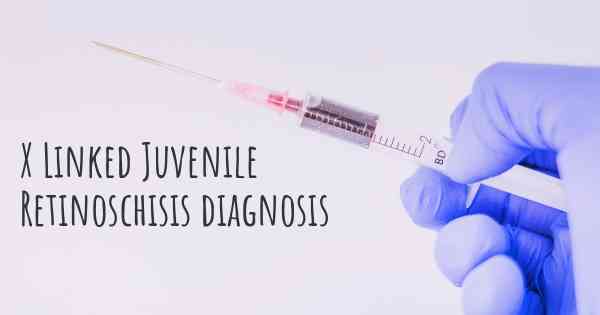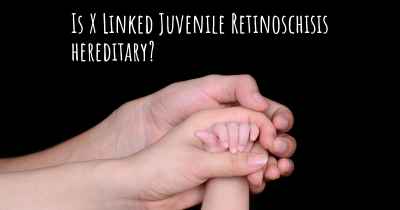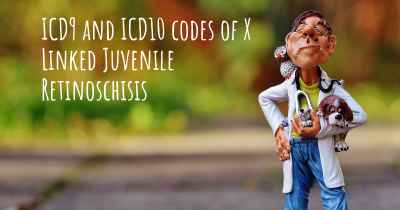How is X Linked Juvenile Retinoschisis diagnosed?
See how X Linked Juvenile Retinoschisis is diagnosed. Which specialists are essential to meet, what tests are needed and other useful information for the diagnosis of X Linked Juvenile Retinoschisis

Diagnosis of X-Linked Juvenile Retinoschisis
X-Linked Juvenile Retinoschisis (XLRS) is a genetic eye disorder that primarily affects males. It is characterized by the splitting of the retina, leading to impaired vision and potential vision loss. Early diagnosis is crucial for managing the condition and preventing further complications.
Medical History and Symptoms:
Diagnosing XLRS typically begins with a comprehensive medical history review and a thorough examination of the patient's symptoms. The most common symptoms of XLRS include reduced visual acuity, difficulty seeing in bright light, and abnormal eye movements. It is important for patients to provide detailed information about their symptoms and any family history of eye disorders.
Visual Acuity Test:
A visual acuity test is performed to assess the sharpness and clarity of a person's vision. This test involves reading letters or numbers from a standardized eye chart at various distances. Individuals with XLRS often exhibit reduced visual acuity, especially in the central field of vision.
Retinal Examination:
A comprehensive retinal examination is a crucial step in diagnosing XLRS. This examination is typically performed by an ophthalmologist or a retina specialist. It involves dilating the patient's pupils using eye drops to allow for a detailed examination of the retina. The doctor will use specialized instruments, such as an ophthalmoscope or a slit lamp, to visualize the retina and look for characteristic signs of XLRS, such as retinal schisis (splitting) and macular changes.
Electroretinogram (ERG):
An electroretinogram is a diagnostic test that measures the electrical activity of the retina in response to light stimulation. It helps assess the functioning of the retinal cells, including the photoreceptors. In XLRS, the ERG often shows reduced or abnormal responses, indicating retinal dysfunction. This test is particularly useful in confirming the diagnosis of XLRS and differentiating it from other retinal disorders.
Genetic Testing:
Genetic testing plays a crucial role in confirming the diagnosis of XLRS and identifying the specific genetic mutation responsible for the condition. This test involves analyzing a blood or saliva sample to identify mutations in the RS1 gene, which is associated with XLRS. Genetic testing can also help determine the inheritance pattern and provide valuable information for genetic counseling.
Additional Tests:
In some cases, additional tests may be recommended to further evaluate the extent of retinal damage and assess visual function. These tests may include optical coherence tomography (OCT) to obtain detailed images of the retina, visual field testing to assess peripheral vision, and color vision testing.
Conclusion:
Diagnosing X-Linked Juvenile Retinoschisis involves a combination of medical history review, symptom evaluation, visual acuity testing, retinal examination, electroretinogram, and genetic testing. Early diagnosis is crucial for implementing appropriate management strategies and providing necessary support to individuals with XLRS.








